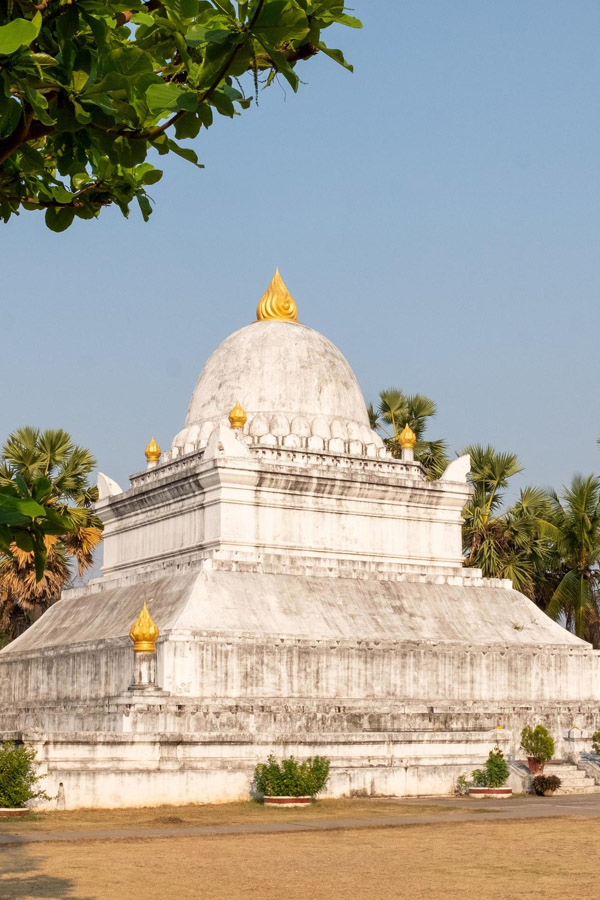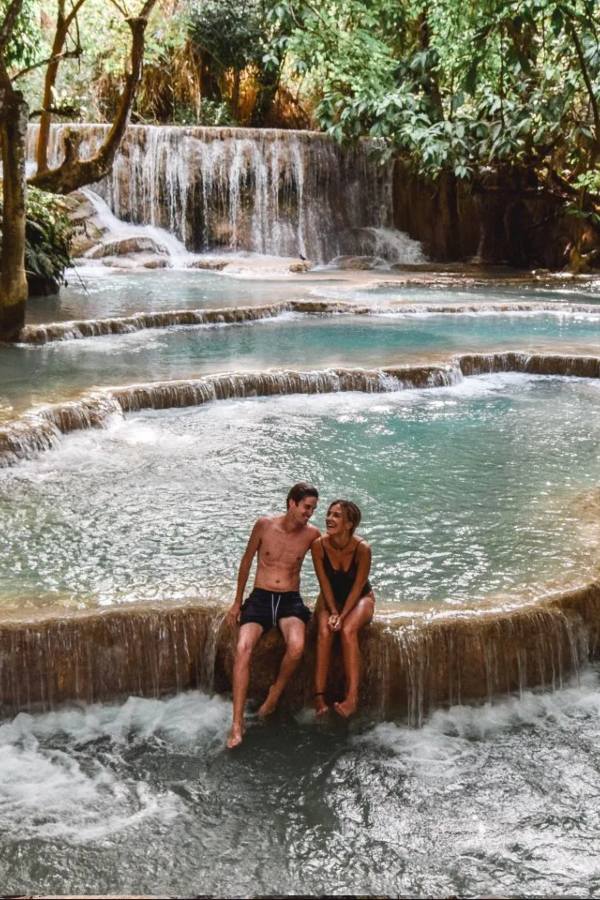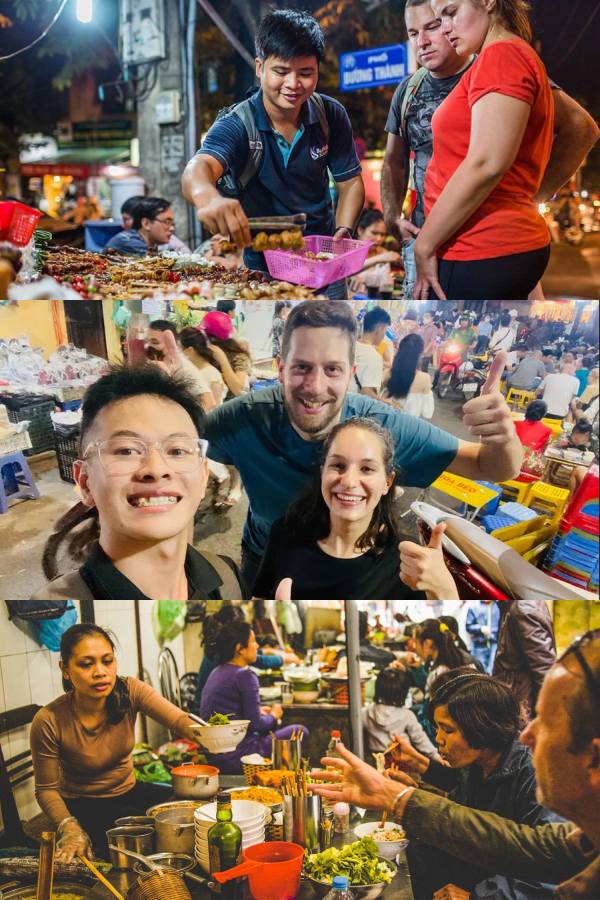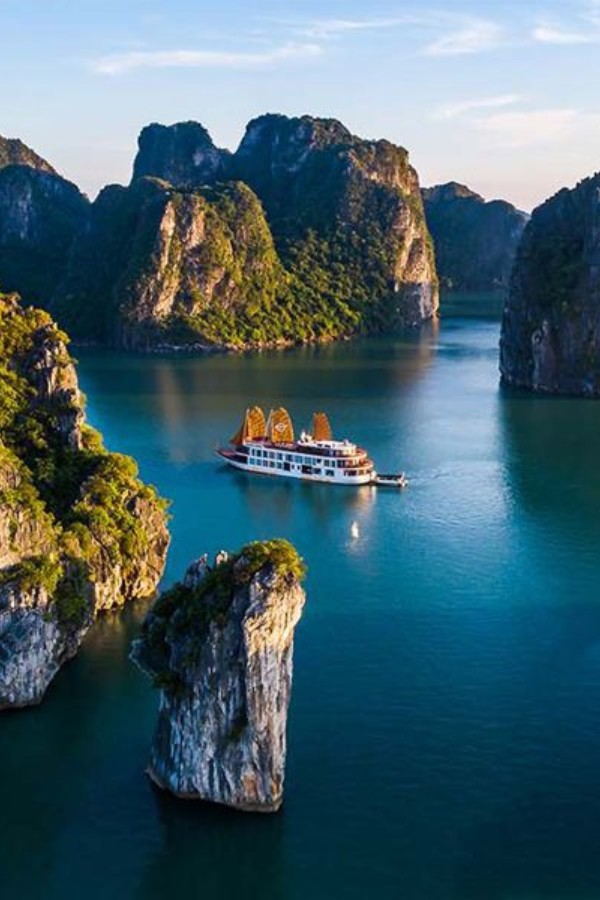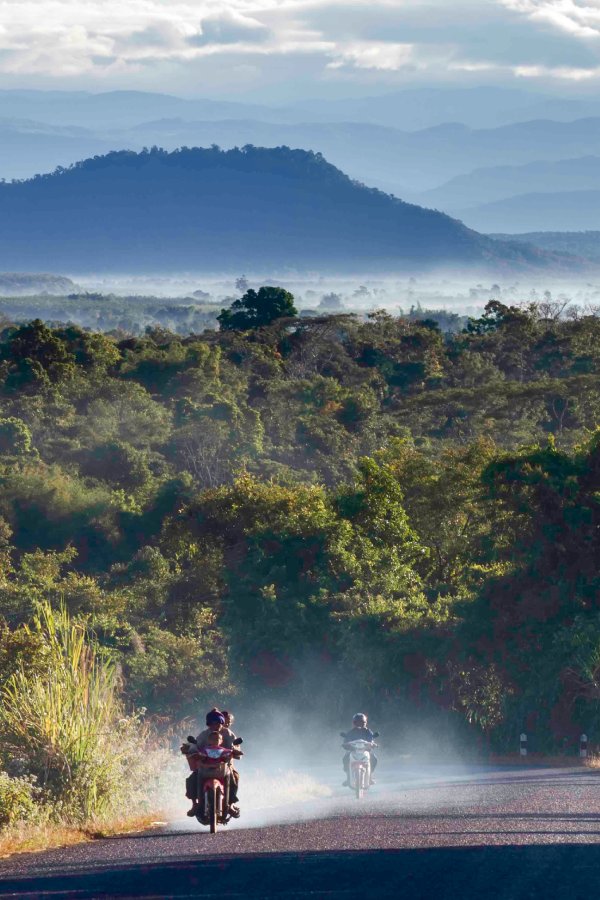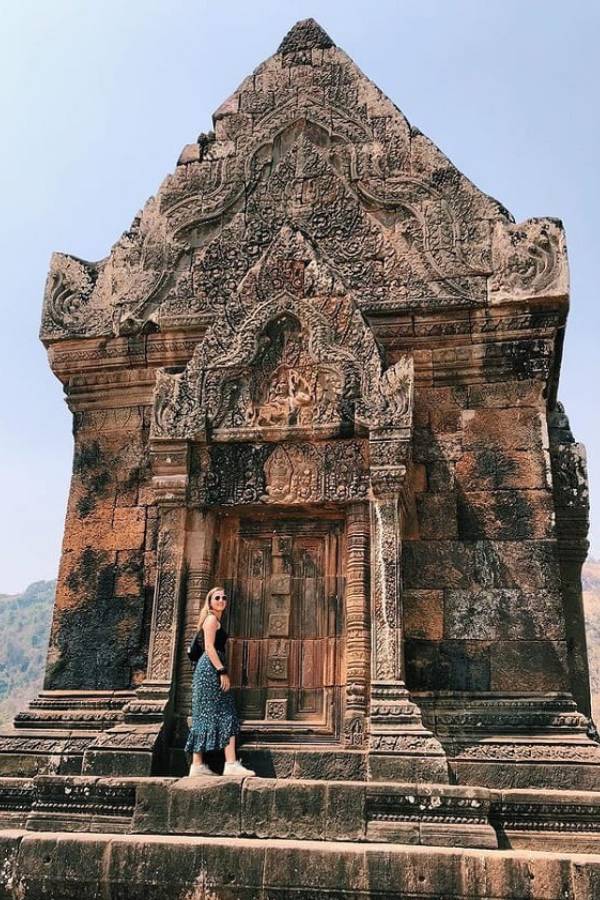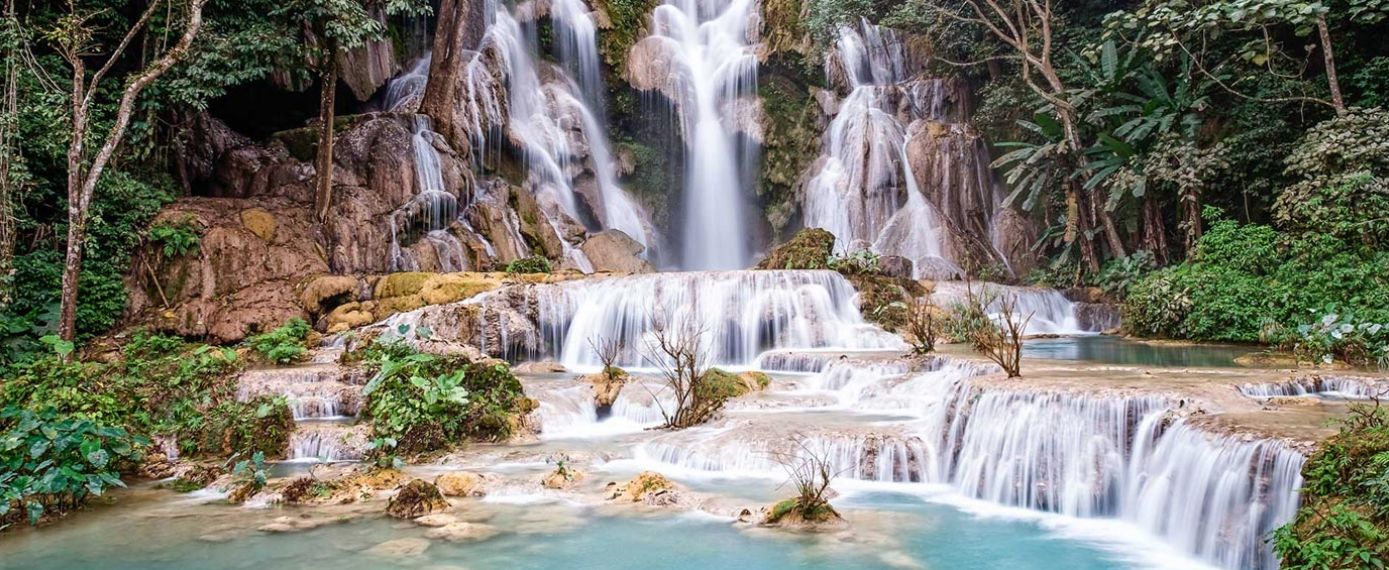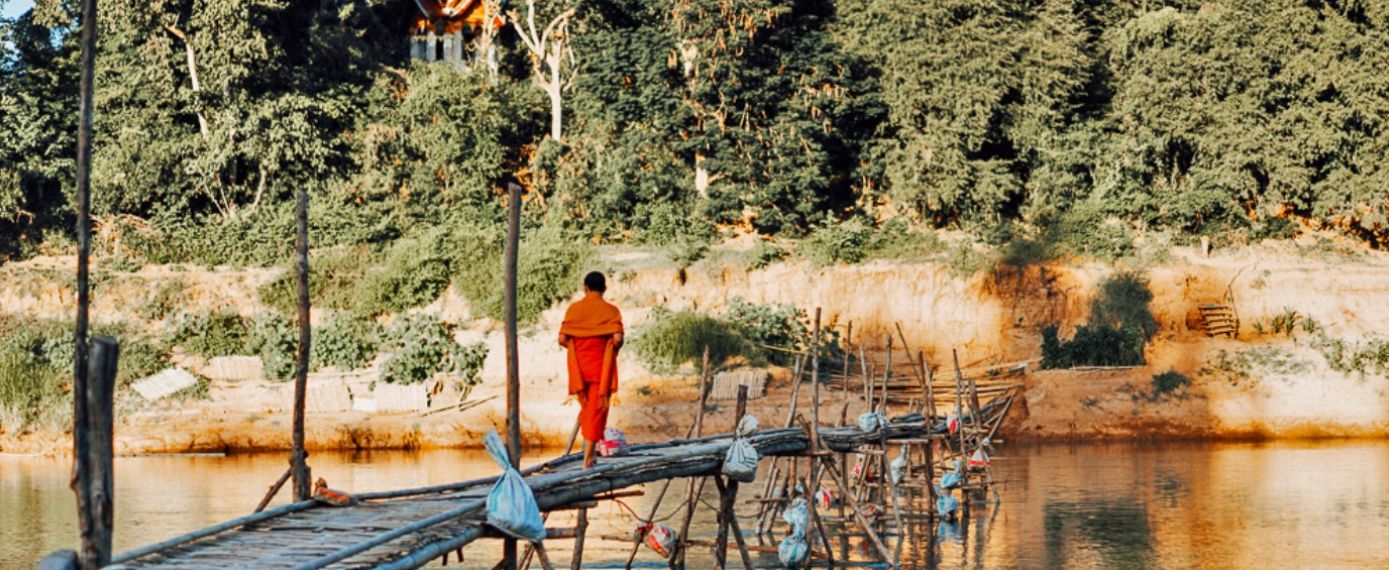
This 22-day adventure winds through the wonders of Cambodia, Vietnam, and Laos, blending iconic sights with unforgettable local experience. Start at the magical temples of Siem Reap, cruise the emerald waters of Halong Bay, stroll the lantern-lit streets of Hoi An, uncover imperial charm in Hue, and explore the buzzing energy of Ho Chi Minh City. Then travel onward to Pakse and the spiritual beauty of Luang Prabang. Every stop is a new chapter in your Southeast Asia story. It’s culture, nature, and history wrapped into one incredible journey.
This 22-day adventure winds through the wonders of Cambodia, Vietnam, and Laos, blending iconic sights with unforgettable local experience. Start at the magical temples of Siem Reap, cruise the emerald waters of Halong Bay, stroll the lantern-lit streets of Hoi An, uncover imperial charm in Hue, and explore the buzzing energy of Ho Chi Minh City. Then travel onward to Pakse and the spiritual beauty of Luang Prabang. Every stop is a new chapter in your Southeast Asia story. It’s culture, nature, and history wrapped into one incredible journey.
Highlights of this Tour
Our tour includes
Stay at
Hotel(20 nights), Cruise(1 night)
Read more...Transfers
Travel by private & shared vehicle with driver according to daily schedule
Read more...Local Team
Private guides, drivers, your own travel expert
Read more...Meals
Daily scheduled meals including breakfast at hotel and lunch at local restaurant
Read more...Activities
28 Interesting Experiences
Read more...Services
In-tour offerings including entrance fees, boat trips, in-tour flights...
Read more...Stay at
Hotel(20 nights), Cruise(1 night)
Read more...Transfers
Travel by private & shared vehicle with driver according to daily schedule
Read more...Local Team
Private guides, drivers, your own travel expert
Read more...Meals
Daily scheduled meals including breakfast at hotel and lunch at local restaurant
Read more...Activities
28 Interesting Experiences
Read more...Services
In-tour offerings including entrance fees, boat trips, in-tour flights...
Read more...Trip Overview
The enchanting trail through Vietnam, Laos and Cambodia - 22 days

SiemReap
Hanoi
Halong Bay
Danang
Hoi An
Hue
Ho Chi Minh
Mekong
Ho Chi Minh
Pakse
Luang Prabang

With over 15 years of experience, our team will help you choose the perfect for your adventure.

Authentic

Flexible

Persionalized

24/7 Support


Destinations of this tour
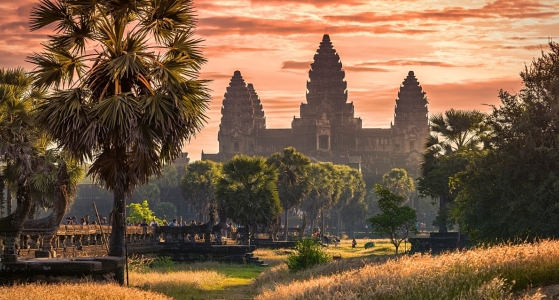
Siem Reap is the gateway to Cambodia’s vast and spectacular temples of Angkor undoubtedly one of the world's greatest archaeological sites. Constructed between the 9th and 15th centuries, these magnificent temples were once the grounds for the Khmer Empire’s capitals. The Angkor Archaeological Park covers around 400 sq km, and the largest, most well-known temple is Angkor Wat. The mysterious architectural techniques used to construct these temples still amaze the world today. Apart from the temples, one can take a Vespa ride and weave through the streets with a local guide on a street food tour. Head into the countryside for a cooking class, cycle or even ride a quad bike along the backroads, passing villages, paddy fields and taking in a more peaceful side to the city. Further afield is Southeast Asia’s largest freshwater lake - the Tonlé Sap. Cruise past the villages of stilt houses rising from the lake, such as Kampong Phluk town that soars above the water in the dry season and sits on top of the water in the rainy season. Welcoming 2.6 m tourists annually, Siem Reap is one of the biggest tourism hubs in Southeast Asia. From exploring ancient temples and floating villages to indulging in exquisite Khmer cuisine and relaxing in luxurious resorts, the town promises an unforgettable experience that blends cultural immersion with modern comforts.
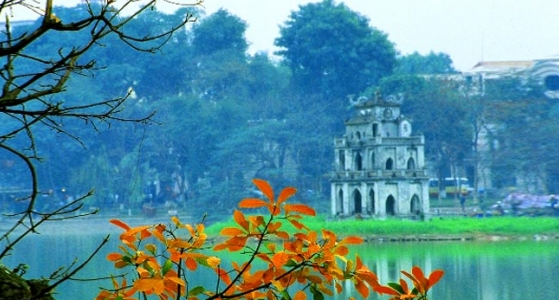
Perched on the banks of the Red River, Hanoi is Vietnam's capital and one of the world's most ancient cities. Its beauty lies in its liveliness of bustling streets where workshops and cafes spill out onto the streets and roadsides. As the intersection point where east meets west, Hanoi is a fascinating mix of old and new, Asian and European. With Chinese and French influences, an ancient culture, colonial architecture, broad tree-lined boulevards and beautiful lakes, the iconic architectural appearance of the Old Quarter and the elegance of the French Quarter, Ho Chi Minh’s Mausoleum and the Temple of Literature, etc... gives Vietnam’s capital city a unique charm of the ancient and modern. Hanoi is also home to one of Asia’s strong indigenous culinary traditions, with bustling wet markets and a rowdy street-food culture, as well as some five star international dining options. It is also very affordable by urban Asian standards, with the majority of hotels and restaurants offering plenty of value.
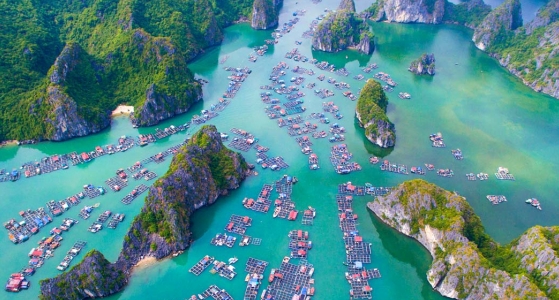
Halong Bay, listed as a UNESCO World Heritage Site in 1994, is located 170km east of Hanoi. It is made up of three neighboring bays: Halong, Lan Ha and Bai Tu Long bays, although Halong Bay is undeniably the most famous and most well-known of the three. Widely considered a natural wonder of the world, the UNESCO World Heritage Site is breathtaking with thousands of majestic limestone, peaks and islets rising dramatically out of the sparkling emerald waters of the bay. The most common way to explore is by taking an overnight night cruise or day-trip which cruises among the limestone pillars and islets. Many also include an island drop off and cave explorations. Visiting floating villages in the area gives a chance to interact with the local community whose livelihoods depend on the waters. Another way to immerse oneself close up in the bay is by kayaking near and around the limestone pillars and some of the caves that are possible to enter by kayak.
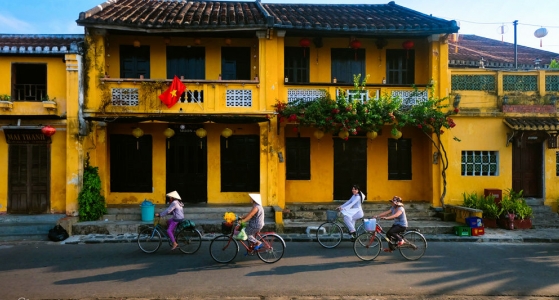
One of the oldest cities in Asia, Hoi An town is in central Vietnam and was declared a UNESCO World Heritage Site in 1999 thanks to its 800 historic buildings. Today, its iconic yellow ochre facades, a quaint riverfront promenade, pedestrian-friendly streets, and hundreds of colorful lanterns that light up the town every evening are a magnet for local and international visitors. Due to extremely well-preserved heritage architecture, Hoi An has an irresistible charm. The Japanese merchant houses, congregation halls of the former Chinese communities and even the warehouses hold the memory of where and when traders from various communities across Asia gathered. Hoi An is one of Vietnam’s most favorite destinations with something for every one. A quaint town perfect for strolling, shopping, and dining; awesome beaches and a perfect mix of countryside and villages which can be explored by bicycle or motorbike.

Hue, the former royal capital under the Nguyen Dynasty is based in central Vietnam and is one of the oldest Vietnamese cities. Set on the banks of the Perfume River, this historical city is home to the Imperial City which became a World Heritage Site in 1993. Apart from the remnants of Vietnam war, Hue is a hub of rustic, ornate royal tombs hidden away in sublime jungle settings, an imposing citadel with carefully restored gardens and palaces, and iconic pagodas. Easy going and laid back, Hue is an ideal destination for history and nature lovers and can easily be explored on foot, by bicycle or motorbike.
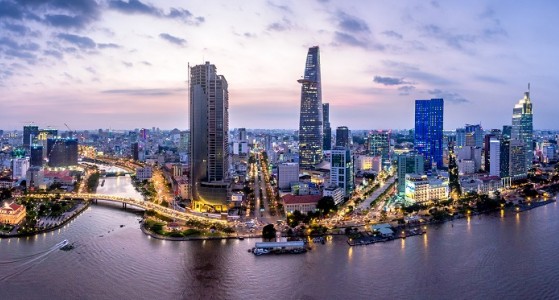
Commonly known as Saigon, Ho Chi Minh City in southern Vietnam is the country’s largest city and the financial and economical capital. This is a city full of surprises. Chaotic traffic blends with peaceful pagodas, parks, multi-style coffee shops and whole neighborhoods hidden down tiny alleyways. Icons of the past endure in the middle of the city’s vast urbanization. The ornate Saigon opera house, Hôtel de Ville - former French city hall, broad boulevards leading to the Saigon River and the gracious stucco villas are reminders of French-colonial times. In addition, the Chinese influence is also evident particularly in Cholon district (the city's Chinatown), while modern skyscrapers and international hotel chains that dot the skyline symbolize Vietnam's fixation on the future.

The Mekong Delta, located in the southernmost territory bordered by Cambodia, is the most fertile land in Vietnam. This is a region of unrelenting beauty - nicknamed the 'rice bowl' of Vietnam, where over 50% of Vietnam’s rice is grown. It is home to a unique ecosystem with diverse communities and ethnicities, and there are few places like this in the world. One the best, if not the best, ways to experience this area is to take a boat trip (1 day or a few days with staying overnight in local homestays) along the Mekong River's twisting capillaries of tropical canals, mangroves, past rice paddies, floating markets, where life on and off the river merge into one.
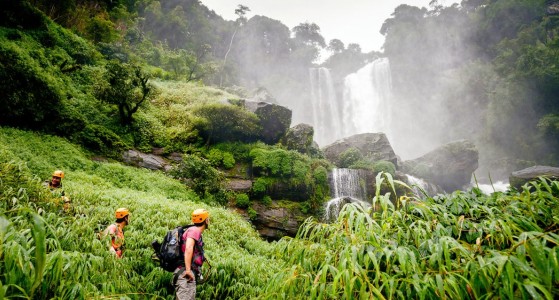
The Bolaven Plateau is a high area in southern Laos. The plateau is mostly located in Laos' Champasak Province, although its fringes may also be found in Salavan, Sekong, and Attapeu Provinces. It is located between the Annamite Mountain Range, which forms Laos' eastern border with Vietnam, and the Mekong River to the west, at around 15°N 106°E. It is traversed by various rivers and features numerous spectacular waterfalls. The name Bolaven refers to the Laven ethnic group, which has historically ruled the region. However, domestic migrations by the Lao ethnic group (which constitutes around 50 to 60 percent of the population of Laos) have resulted in significant interethnic marriage, thereby changing the ethnic composition of the area.
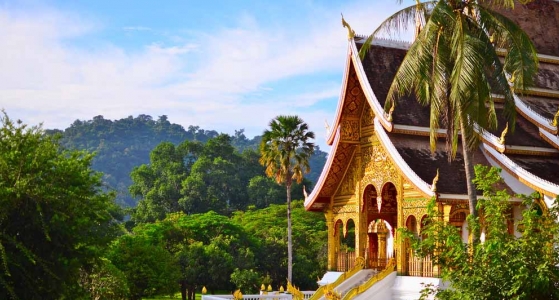
Luang Prabang is a small but vibrant town in the heart of northern Laos. It is adorably picturesque with glittering temples, a mix of traditional Lao wooden houses and hints of European architecture, colorful markets and quaint streets famous for the daily sunrise alms giving ritual where food is offered to the monks. Luang Prabang’s picture postcard image includes French-style cafés, bakeries, restaurants and former French villas with green shutters, the town is a fascinating legacy to when Laos was part of French Indochina. This town is one of the most favorite destinations in Laos, this place has a lot to offer, from dozens of temples, stunning waterfalls, French colonial architecture, bustling night markets to river cruises. On the outskirts are vibrant rice fields and traditional local villages. Luang Prabang was declared a UNESCO World Heritage Site in 1995, and it is also the birthplace of numerous Laotian rituals.
OTHER TOURS YOU MAY LIKE
This is the sample itinerary for those wanting to explore all of Laos in one trip, from natural experiences to cultural visits. You start at Luang Prabang for ancient temples, forest waterfalls, and boat trips to Pak Ou Caves, then travel to Xieng Khouang to visit the mysterious Plain of Jars and enjoy kayaking along the Nam Song River of Vang Vieng. Stop at the capital Vientiane for a city tour around its top attractions before flying to Luang Namtha to delve deep into the Nam Ha Protected Area for a true eco-experience. Spend four days relaxing in the tranquil Nam Kat Yorla Pa Resort and uncovering the surrounding jungles and waterfalls. Your adventure will end back in Luang Prabang, where you depart the landlocked country of Laos.
Only From $3196/person
All Inclusive ServiceThis Tour
Hike, trek, boat, or climb your way to all the best parts of Luang Prabang. This 7-day experience provides an in-depth discovery of Luang Prabang and its surrounds with the help of a knowledgeable local tour guide. You’ll uncover a diverse range of cultural, historic, relaxing, and adventure sites in and around this UNESCO-listed World Heritage town, from the ancient temples in Luang Prabang to the laid-back landscapes in Nong Khiaw and the remote village in Muang Ngoy. Stay active and explore new things in the Land of a Million Elephants.
Only From $1176/person
All Inclusive ServiceThis Tour
Take this 6-day tour to enjoy the serenity of Laos. Wander around Luang Prabang to see the sights reflecting the history and the rich culture of Laos. Watch the monks collecting alms and visit Kuang Si waterfalls. We then visit the World Heritage - Watphou and transfer to Si Phan Done. After visiting the fabulous Khone Phapaeng waterfall, the biggest of waterfall in Southeast Asia, we return to Pakse for departure.
Only From $948/person
All Inclusive ServiceThis Tour

Customize this tour with us!


Adventure Travel Trade Association -ATTA#852025


American Society of Travel Agents - ASTA#900385282

Family Travel Association - FTA#4092797


Tripadvisor Travelers Choice Awards


As seen in The Guardian

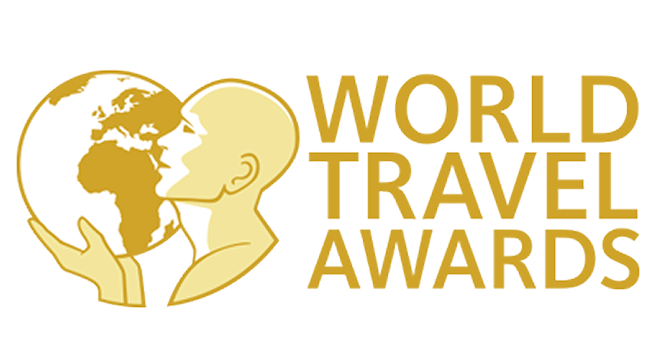
World Travel Awards Winners 2025
ABOUT US
Why Us What the clients say about us Trusted Travel Company What Makes Us Different Meet Our Team Southeast Asia Travel Guide Southeast Asia Tour Highlights Pre-departures Deposit & Payment Cancellation Policy Terms and Conditions Contact UsOur Destinations
Vietnam Tours Cambodia Tours Thailand Tours Indonesia Tours Malaysia Tours Philippines Tours Laos Tours Singapore Tours Myanmar ToursMulti-country
Vietnam Cambodia Tours Vietnam Cambodia Laos Tours Vietnam Thailand Tours Vietnam Cambodia Thailand Tours Thailand Malaysia Tours Thailand Malaysia Indonesia Tours Indonesia Thailand Tours Indonesia Malaysia Vietnam Tours Southeast Asia Tours 26 - 30 Days Southeast Asia Tours 18 - 26 Days Southeast Asia Tours 12 - 18 DaysTravel Themes
Best Southeast Asia Tours Southeast Asia Heritage & Culture Tours Southeast Asia Nature & Wildlife Tours Southeast Asia Family Tours Southeast Asia Honeymoon Tours Southeast Asia Adventure & Outdoor Tours Southeast Asia Beach & Island Tours Southeast Asia Cruise Tours Southeast Asia Tours 8 - 12 Days Southeast Asia Tours < 8 DaysSOUTHEAST ASIA TRAVEL COMPANY LIMITED
Southeast Asia Travel is an award-winning travel company specializing in bespoke, private and luxury tour packages across Vietnam, Laos, Cambodia, Thailand, Singapore, Malaysia, Indonesia, Myanmar, the Philippines and beyond. With over 15 years of industry expertise, we have guided more than 30,000 travelers on unforgettable journeys through the heart of Southeast Asia. Every Southeast Asia Tour we create is fully customized to reflect your interests, whether you seek hidden gems, iconic landmarks or personalized experiences.
Read more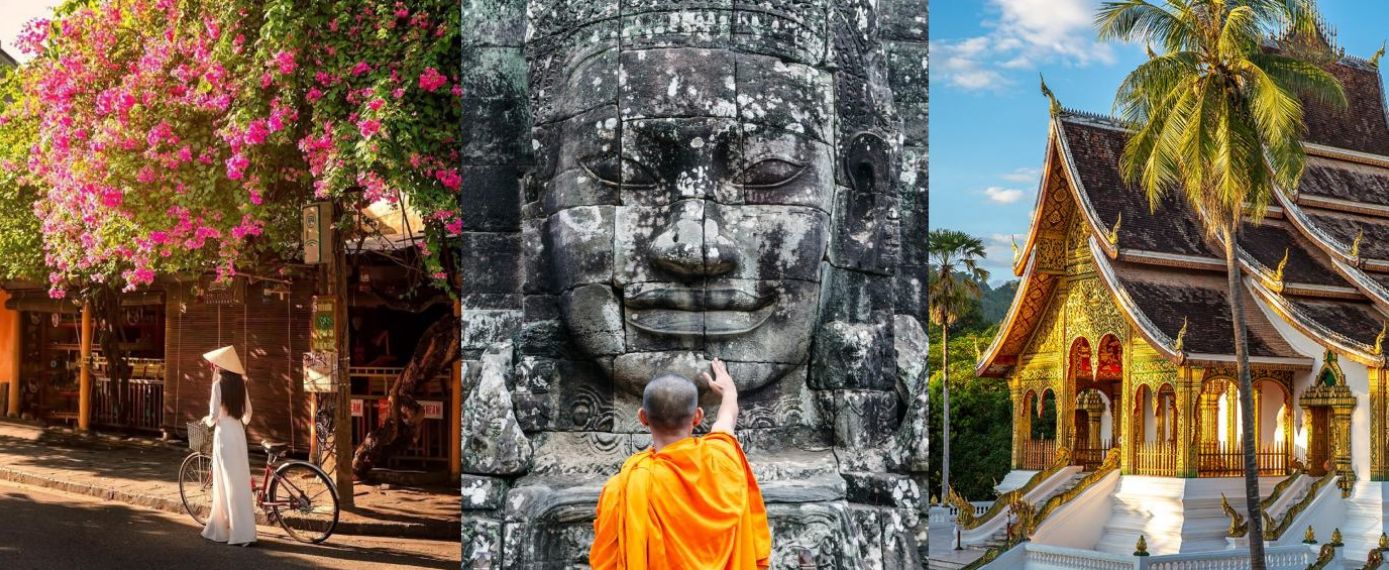
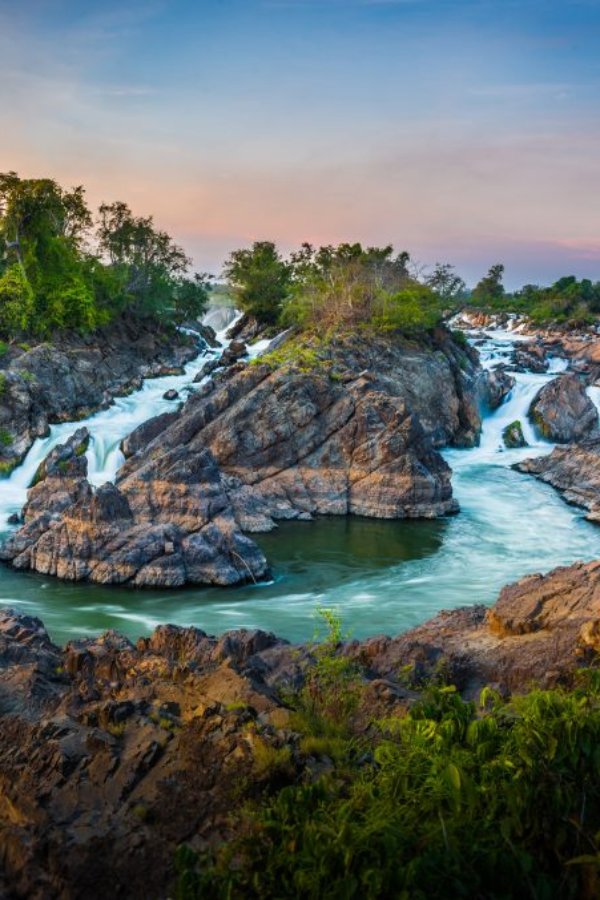



-1714320997.jpg)

